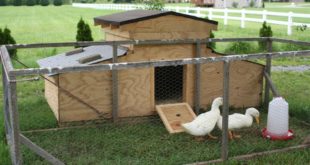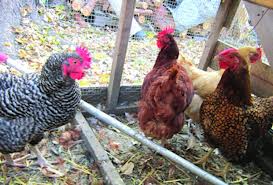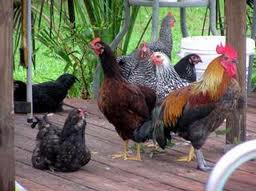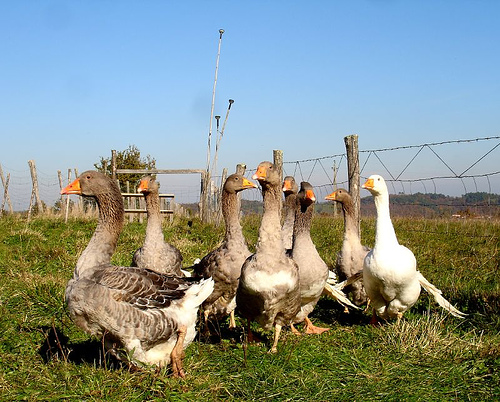Brooding (0 to 4 Weeks)
The ducklings can be brooded on wire floor, litter or batteries with brooding period upto 3 to 4 weeks. They require slightly low temperature of 31°C in first week. Further it is reduced by 3°C each week upto 24°C and kept constant. A usual method is to house ducklings on litter in long narrow house having pens on each side of central passage. Further they can be given access to run on both the sides of houses _during fattening period. The following special points should be kept in mind for successful brooding:
- Provide hover space of 90 to 100 cm2 per duckling under brooder.
- Water in drinkers should be 5 to 7.5 cm deep, sufficient to drink but not to dip themselves.
Protect duckling from cold drafts and rodents
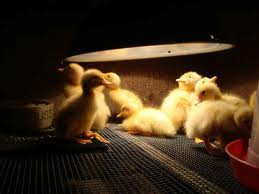
Growing (5 to 16 Weeks)
Ducks can be reared by intensive, semi-intensive or range systems. The run space after four weeks alloted is usually 3 to 4 m2 per duck. Water depth is increased to 12.5 to 15 cm to allow immersion of heads to prevent scaly, crusty or in extreme cases blindness of eyes. Run fencing of 60 cm height is usually suffice purpose of confining ducklings.
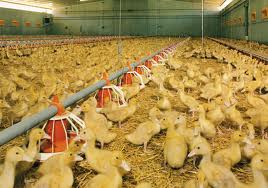
Raising Layers (Above 17 Weeks)
The high egg producing strains starts laying at 16-18 weeks of age and about 96 per cent eggs laid upto 9 am. Because ducks are comparatively hardy birds, they do not need elaborate housing. They can be reared on intensive or range system. Range rearing can be comfortably adopted for small scale farming in which ducks can be kept in open areas of the farm and have access to ponds, lakes or small river. In range 100 ducks can be reared per 0.405 hectare (one acre) depending on availability of greens.
Housing pattern is same as that of chickens with addition of runs as ducks prefer to stay outside during day time. The house may have solid or wire floor with shed of gable or half-round roof. The runs should have gentle slope away from houses for facilitating drainage
Artificial Light
Brooders require continuous artificial light. Growers. are reared on natural day length, whereas layers are provided 14 to 16 hours of day length for optimum production.
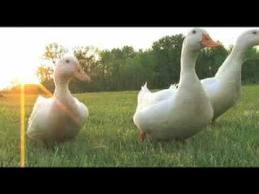
Feeding of Ducks
Pellets or combination of dry and wet mash is used for feeding. Wet mash feeding is preferred due to difficulty is swallowing of dry mash. Therefore, ducks should not have access to feed without water. They may be allowed continuous feeding for first eight weeks but afterwards feed may be offered only twice in a day, i.e. morning (8 am) and late afternoon (4-5 pm),ranges from 120-160 g per bird depending on egg production, age and availability of greens. They need an extra 500 mg of methionine per ton, while growing whereas during laying its requirement is lesser than chicken.
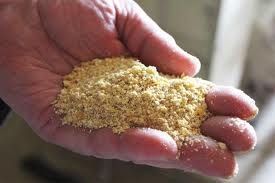
Water
Water for swimming is not as essential feature. But scarcity of water may result in more mortality, therefore, continuous water flow channel with dimensions of about 60 cm in width and 30 cm in depth should be constructed at one of the end of house to meet water thirst.
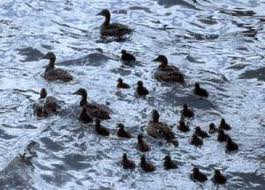
Nest Boxes
Ground level nest boxes, one for three birds of 30 x 30 x 45 cm size be provided for clean egg production. The litter in boxes should be changed 2-3 times in week.
Catching and Handling
While catching ducks they should be caught by neck and not on side of body as it may result in sudden death.
Health and Management
The duck diseases are to be prevented by proper vaccination and through adoption of effective sanitation and hygiene.
